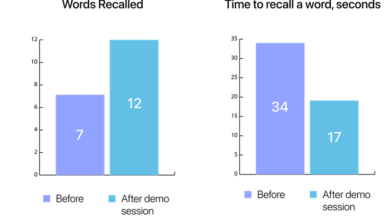Cloud Inventory Expert Shares How to Reveal Hidden ROI in Cloud-Based Inventory Management

Full Transcription below:
Eric: This episode of Enterprise Radio is brought to you by The Before It Happened podcast series. From transportation and AI to just anything you can put in your home office or pocket, you’ll hear from the innovators themselves as they tell their stories of how they brought those visions to life. To listen in or to subscribe, simply visit beforeithappened.com.
INTRO
Welcome to Enterprise Radio, the signature show of the Enterprise podcast network featuring some of the most prominent business professionals in the world today. And now your host, Eric Dye.
Eric: Once again, this is Eric Dye. Welcome to Enterprise Radio, a part of EPN, the Enterprise Radio Podcast Network. Today, we’re speaking with Brent DiBartolo, the vice president of Sales America, is an experienced supply chain sales leader at Cloud Inventory, a company that empowers organizations with real time inventory, visibility at all points in the supply chain, from the warehouse to the field, and he joins us to discuss the benefits of conducting a business case specifically with an ROI focus.
Mr. DiBartolo, thanks for joining us here today on Enterprise Radio.
Brent: Thanks for having me, Eric.
Eric: You’re certainly more than welcome. Thanks for your time, and looking forward to learning a few things per your expertise here today.
As we know, many companies now require a thorough business case, complete with a return on investment analysis before approving major expenditures on new projects. Why is conducting a business case analysis often viewed as a daunting task? Let’s start things out with that today.
Brent: Good question. You’re absolutely right. Nowadays, you’ve got to be able to answer the question — what is this going to do to save us money? And how much money is it going to save us? And when will we start to save money? — if you’re going to have a prayer of getting a project funded.
You can’t walk into a meeting and ask for major investments into software if you haven’t deeply thought through the why, the how, the how much, and why now first.
There’s probably quite a few reasons why this might seem daunting. We probably can’t cover them all today unfortunately. Some of the ones that come top of mind would be, first knowing what specific problem you’re trying to solve in the first place. Understanding what the cost of those problems are to your organization. Taking the time to review what that really means at a financial level.
Saying that the process is broken, or this takes too long, or we don’t know what we don’t know — those don’t cut it anymore. So you’ve got to start by just actually getting over the fact that you’ve got to be able to identify and define that problem first.
One of the other ones that come to mind would be, people don’t tend to have a whole lot of comfort with finance and math if they don’t have a background in it. This isn’t as big a deal as most people would think, but it really just comes down to understanding, and being able to vocalize and verbalize what types of savings are going to be considered as part of the solution to the problem.
It’s not truly a finance degree requirement, but it’s something that I think might cause some people concern on the front end.
And I really think the biggest hurdle people have is pretty simple. It’s just knowing where to start. Just being able to understand this process — how long is it? What do I need to do? And where do I even begin? — is probably the biggest hurdle people have to even get started in the first place.
Eric: Well, I’ll tell you. That certainly lays the groundwork here for this conversation and some very helpful information to get things rolling today.
For businesses wanting to start creating their business case, where do you recommend they start on that?
Brent: Good question. And again, I think it depends on where you are in your evaluation, how complex the problem is, and really, how strong your relationship is with some of your prospective vendors.
It does sometimes seem counterintuitive to ask the company that wants to sell you something to help you justify buying it, but we’ve had dozens of customers that have called us looking for help early on in the process. They have known for sure that there was a problem, but they weren’t exactly sure how to help quantify that problem or where to start looking for the metrics that would matter most to their finance and operations team.
So even though your vendors are going to want you to buy their software solution, they’ve also spent countless hours, dollars, deeply investigating the problems that you’re trying to quantify right now. They’ve conducted extensive research, they’ve looked at reputable industry sources. They’ve often aggregated this info into an easy-to-consume structure.
These tools can definitely help get you off that springboard and started down the path towards a business case. It doesn’t mean that you’re necessarily going to end up back where you started with that particular vendor, but they can certainly help get you moving in the right direction.
Ultimately the key is — don’t get bogged down looking to try to find the exact answers to the exact equation you have in front of you. Think about the metrics you’re trying to improve, engage with your vendors, and start to look at what information and research they may have to be able to help support you in your endeavor.
Eric: What would really help is if we could just walk us through the process of conducting a business case, I’m sure listeners would appreciate that.
Brent: Sure. It comes back to some of the things I touched on earlier. The first piece, and it seems simple, but it’s often the most critical, is know what the specific problem you were trying to solve for.
You’ve got to be able to clearly articulate that one specific problem you’re trying to resolve and avoid falling into a trap that I think a lot of people fall into which is — bundle 15 things together, call it one problem and then go try to figure it out.
If the problem you’re trying to solve for is important enough and big enough to invest in resolving, the other piece is, the extraneous pieces don’t matter.
So the first piece is, understand what it is and be able to clearly articulate what it is. The second is then, obviously understanding what the cost of those problems are specific to your organization.
Oftentimes people looking to resolve a problem are also the ones that have some firsthand anecdotal knowledge of the cost themselves.
One company we worked with recently had knowingly lost $3 million dollars’ worth of goods in the previous quarter. They figured this was probably not uncommon for them. They didn’t know if three million and a quarter was a little high, a little low, or completely outside the norm, but they felt like it was probably fairly consistent. So that’s a great place to start. Having that anecdotal information is critical in framing where you’re going to need to look to find those true costs of the problem.
It also exposes where some of the underlying costs may be beyond the initial one. Those goods going missing for that particular company cost that company’s employees significant time searching for things, then resulted in them ordering more materials to complete the initial job than they truly needed because they had already purchased them the first time.
The next jobs then result in some intentional over-ordering, the hedge against the visibility that they had accounted for previously, and the snowball effect starts happening at that point. So it really starts with that first initial framework, and often then delivers you the whole picture, fairly seamlessly from there.
Next, it’s important to engage with the people who are going to really help drive this for you. That typically ends up being a finance department. These are the people who will be able to help you identify what types of quote-unquote “savings” are considered hard dollar versus soft dollar. They’ll be able to help you understand what your organization uses for calculations like cost of capital or operational expense, versus capital expense, and ensure that you’ll know how your organization will buy something and also how they will evaluate the expenditure, compared to all the other potential expenditures.
I think at the end of the day, people need to understand that dozens of legitimate and highly beneficial projects don’t get funded every year. It’s not because they’re not valuable and they’re not worthwhile. It’s simply due to limitations on things like available capital, internal bandwidth or people, or some other reasons internally. So you don’t need to only make a case that this project is worth it. You need to make a case that this project is more worth it and more worthy than all of the other available options.
So that starts with understanding how your organization is going to evaluate this particular project and building your framework from there.
Eric: Excellent information on the process of conducting a business case. Really do appreciate your thorough response on that.
This episode of Enterprise Radio is being brought to you by our partners at the Before It Happened podcast series. Before any world changing innovation, there was a moment, an event, a realization that sparked the idea. The Before It Happened podcast series is a show about that idea. Each week, host Donna Laughlin takes a deep dive into a singular lightbulb moment that inspired the visionaries to push forward and change our lives forever. To listen in or to subscribe, visit beforeithappened.com.
Today we are joined by Mr Brent DiBartolo, the vice president of Sales Americas, and an experienced supply chain sales leader at Cloud Inventory, and he’s joined us here today on Enterprise Radio, a part of EPN, the Enterprise Podcast Network.
Now, Brent, if you would, in terms of cloud-based inventory management, how can customers identify areas of hidden ROI as a result of this evaluation process?
Brent: Sure, Eric. For Cloud Inventory and our customers, the ability for solutions like ours to be deployed quickly and nimbly and adapt to your organization’s specific needs, but also the cloud nature of them lower that upfront capital costs, or the upfront operational costs.
So those all equate to being in a position to fairly easily show the cost versus benefit analysis at the gate. But the key thing to what you just asked was about that hidden ROI.
Oftentimes when we’re dealing with companies, it may not be so much hidden as it’s either forgotten or intentionally swept under the rug.
What most companies that we’ll work with… I mean, if you look at a significant number of organizations and industries like engineering, construction, or telecom, project intensive industries, where they have significant numbers of assets, but the real focus of the people conducting the work is about timeliness. You’ve got to get a project done quickly. It’s not necessarily all focused on how efficient you are with the actual inventory you’re consuming.
So we work with a lot of companies that are really focused on — get the project complete on time. Not so much focused on — make sure you don’t order three extra trusses for the roof you’re building.
But all it takes is one project to be delayed because someone didn’t realize they had fewer trusses than they needed to build a roof, and then the project was moved beyond the expected completion date. And every project there beyond is going to have additional materials and additional equipment and additional inventory.
The problem isn’t an availability problem in this case. It’s a visibility problem. And solutions like ours help provide true end-to-end visibility.
So when you look at how we’re going to affect change and how we help that hidden ROI, oftentimes it’s going to come back to simply providing visibility into what is where, when, and how you can access it.
Eric: Now, another question for you in the form of a follow up. Once you’ve completed a business case or ROI analysis, then what? What would be the next step after that?
Brent: It’s an important part of the process, certainly.
Similar to understanding how your company evaluates an ROI, or a business case as I mentioned earlier, it’s also critical to understand very early in your process, how your company buys things.
Every company has got a different approach to how they make purchases and make investments. So it’s important to sit down and ask the right people in procurement or finance — is there a formal evaluation required? Do I need to go through a process such as RFI, an RFP, an RFQ? Do we use internal systems to conduct those evaluations? Will we need formal demos for stakeholders? Who are those stakeholders that I need to pull in? Am I able to sole source if I’ve found the right solution right out the gate, providing it falls under a certain budget threshold?
So once you’ve got a business case and ROI analysis completed, it’s important to already know what comes next. Because the procurement cycle is likely predetermined, and it’s going to get rolling fairly quickly if you’ve made the justification that the project is worth funding.
Eric: Mr. DiBartolo, really some fantastic information here, and I’m sure the listeners are much appreciative of your sharing your expertise here on business cases and ROI analysis, and I really do appreciate all the details shared here today.
In conclusion, is there anything else you’d like to add? A takeaway or a tip or anything else?
Brent: I think this has been great, Eric. The key thing is to remember that these things are often not as complex and as daunting as they seem at the outset. Oftentimes, figuring out the best way to propose that your organization makes an investment starts with clearly understanding the problem you’re trying to solve and being confident that that problem is big enough, sufficient enough, and painful enough that the organization will justify investing in the solution.
Eric: A great place to conclude here today. Really do appreciate those concluding remarks.
If listeners wanted to get more information on Cloud Inventory or to be in touch or contact, where’s the best place to do so online?
Brent: You can get all of our information at cloudinventory.com or fieldinventory.com. We’ve got a significant amount of information about what we’ve done for organizations, both from an ROI and a business case perspective, and a number of use cases in there for how we help companies across the spectrum and industry.
Eric: It sounds like you’ve got quite a bit of resources to tap into.
Again, folks, that is cloudinventory.com.
Mr. DiBartolo, all the best, and thanks for joining us here today on Enterprise Radio.
Brent: It’s been my pleasure. Thanks for having me.
Eric: Any time. We’ve been speaking with Mr Brent DiBartolo, the vice president of sales Americas, and an experienced supply chain sales leader at Cloud Inventory, a company that empowers organizations with real time inventory, visibility at all points in the supply chain, from the warehouse to the field. And for all the details, visit cloudinventory.com.
This is Eric Dye, and you’ve been listening to Enterprise Radio, a part of EPN, the Enterprise Podcast Network. Tune in to our live location as we are streaming live, 24/7 around the world at EPodcastNetwork.com/live. You can also find our livestream on iTunes radio, and TuneIn radio, as well as the TuneIn radio app, for your listening convenience.
And as always, we thank you for your support and for tuning in.
OUTRO
Thanks for listening to Enterprise Radio. To subscribe to more of our programming, visit epodcastnetwork.com
Listen to the full podcast on Cloud Inventory’s website: https://www.cloudinventory.com/podcasts/reveal-hidden-roi





